Save 45% on The Crew™ 2 as part of this week’s Weekend Deal*!
*Offer ends Monday at 10AM Pacific Time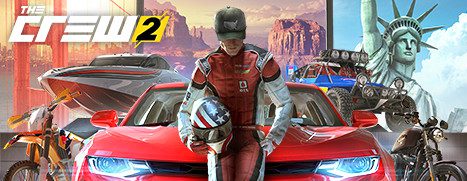 Website: LINK
Website: LINK

Save 45% on The Crew™ 2 as part of this week’s Weekend Deal*!
*Offer ends Monday at 10AM Pacific Time Website: LINK
Website: LINK

Total War: WARHAMMER II – The Curse of the Vampire Coast is Now Available for Pre-Purchase on Steam and is 10% off!*
*Offer ends when the content is released. Website: LINK
Website: LINK
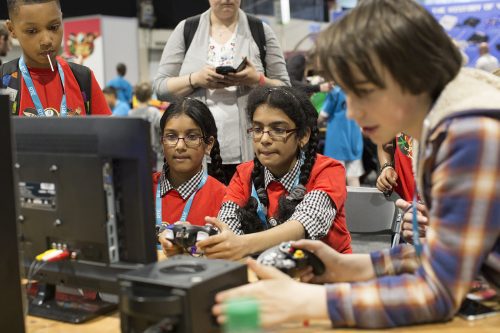
Coolest Projects is the world’s leading technology fair for young people. It’s the science fair for the digital age, where thousands of young people showcase amazing projects that they’ve built using digital technologies. If you want to meet the innovators of the future, this is the place to be, so today we’re really excited to announce three Coolest Projects events in 2019.
Will you be attending Coolest Projects 2019?
Dates are now live for Coolest Projects 2019. Will you be joining us in the UK, Republic of Ireland, or North America?
My first experience was in Dublin in 2016. I had been told Coolest Projects was impressive, but I was blown away by the creativity, innovation, and sheer effort that everyone had put in. Every bit as impressive as the technology was the sense of community, particularly among the young people. Girls and boys, with different backgrounds and levels of skill, travelled from all over the world to show off what they’d made and to be inspired by each other.

Coolest Projects began in 2012, the work of CoderDojo volunteers Noel King and Ben Chapman. The first event was held in Dublin, and this city remains the location of the annual Coolest Projects International event. Since then, it has sparked off events all over the world, organised by the community and engaging thousands more young people.
This year, the baton passed to the Raspberry Pi Foundation. We’ve just completed our first season managing the Coolest Projects events and brand, including the first-ever UK event, which took place in April, and a US event that we held at Discovery Cube in Orange County on 23 September. We’ve had a lot of fun!
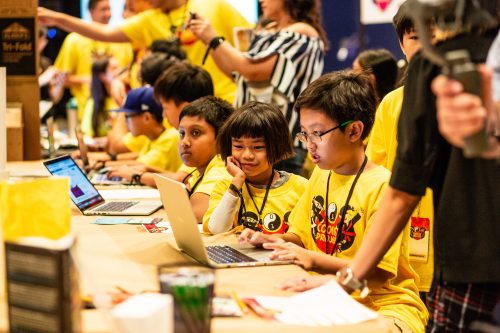
We’ve seen revolutionary ideas, including a robot guide dog for blind people and a bot detector that could disrupt the games industry. We’ve seen kids’ grit and determination in overcoming heinous obstacles such as their projects breaking in transit and having to rebuild everything from scratch on the morning of the event.
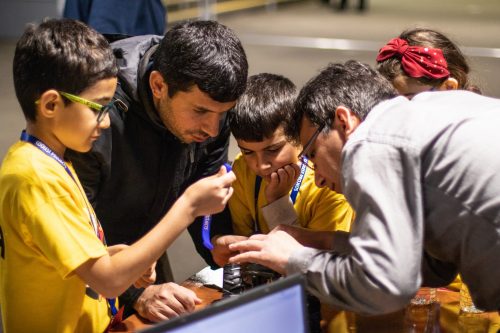
We’ve also seen hundreds of young people who are levelling up, being inspired to learn more, and bringing more ambitious and challenging projects to every new event.
We want to expand Coolest Projects and provide a space for even more young people to showcase their digital makes. Today we’re announcing the dates for three Coolest Projects events that are taking place in 2019:
These are the events that we’ll be running directly, and there will also be community-led events happening in Milan, the Netherlands, Belgium, and Bulgaria.

Project registration for all three events we’re leading opens in January 2019, so you’ve got plenty of time to plan for your next big idea.
If you need some inspiration, there are plenty of places to start. You could check out our How to make a project worksheets worksheets, or get try out one of our online projects before you plan your own.
Head to coolestprojects.org to find out about the 2019 events and how you can get involved!
Website: LINK
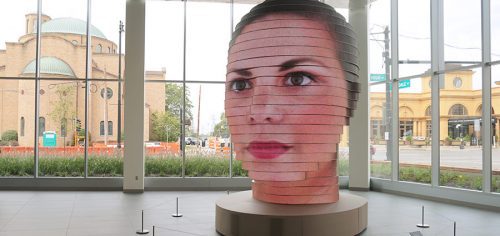
While at World Maker Faire New York last weekend, I found myself chatting to a rather lovely gentleman by the name of Mac Pierce. During our conversation, Mac mentioned a project he’d worked on called As We Are, an interactive art installation located in the Greater Columbus Convention Center in Columbus, Ohio.

“So it’s this 14-foot head covered in LEDs…”, Mac began, and after his brief explanation, I found myself grabbing nearby makers to have him tell them about the project too. I was hooked! I hadn’t even seen photos of the sculpture, yet I was hooked. And true to his word, Mac had the press release for As We Are sitting in my inbox when I returned to Pi Towers.
So here is it:
The Greater Columbus Convention Center: “As We Are” – Creating the Ultimate Selfie Machine
DCL, an award-winning fabricator of architectural specialties and custom experiential design elements, worked with artist Matthew Mohr to develop, engineer and fabricate this 14ft, 7,000lb, interactive digital sculpture. Featuring custom LED modules, an integrated 3D photobooth, 32 cameras, and a touch-screen display – this unique project combines technologies to present a seamless experience for visitors to display their own portrait on the sculpture.
The brainchild of artist Matthew Mohr, As We Are was engineered and produced by DCL, an award-winning Boston-based fabricator whose greatest achievement to date, in my opinion at least, is hiring Mac Pierce.
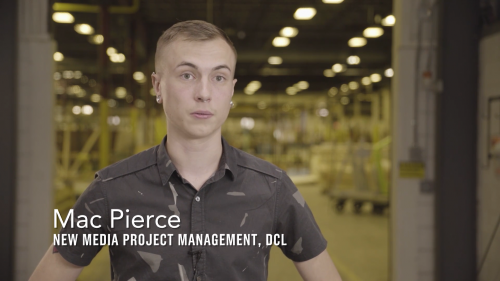
YAY!
DCL built the 14-foot structure using 24 layers of aluminium ‘ribs’ covered in custom Sansi LED modules. These modules add up to an astounding 850000 individual LEDs, allowing for crisp detail of images displayed by the build.
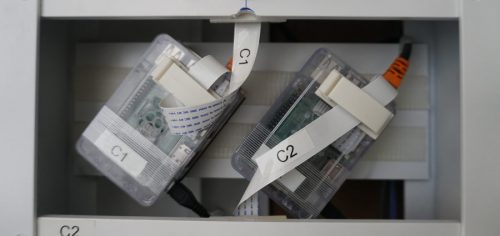
When a visitor to the Convention Center steps inside the interactive sculpture, they’re met with a wall of 32 Raspberry Pis plus Camera Modules. The Pis use facial recognition software to 3D scan the visitor’s face and flattened the image, and then map the face across the outer surface of the structure.
Matthew Mohr was inspired to show off the diversity of Columbus, OH, while also creating a sense of oneness with As We Are. Combining technology and interaction, the sculpture has been called “the ultimate selfie machine”.
If you’re in or near Columbus and able to visit the installation, we’d love to see your photos, so please share them with us on our social media platforms.
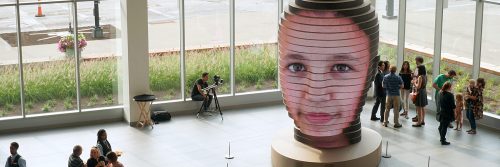
You see now why I was dumbstruck when Mac told me about this project, yes?
Had it not been for a chance encounter with Mac at Maker Faire, we may never have heard of As We Are. While Matthew Mohr and DCL installed the sculpture in 2017, very little fuss was made about the use of Raspberry Pis within it, and it completely slipped under our radar. So if you are working on a project for your business, as a maker, or for any other reason, and you’re using a Raspberry Pi, please make sure to let us know by emailing [email protected].
Website: LINK

Assault Spy / アサルトスパイ is Now Available on Steam!
Dash, evade, and smash your way to the truth as the corporate spy, Asaru; or the reckless CIA agent, Amelia! Uncover the dark secrets of the Negabot mega corporation as you save the company from a hostile takeover. Assault Spy is a stylish, fast paced, pure-action game with a dash of comedy. Website: LINK
Website: LINK

Today’s Deal: Save 75% on Dreamfall Chapters!*
Look for the deals each day on the front page of Steam. Or follow us on twitter or Facebook for instant notifications wherever you are!
*Offer ends Thursday at 10AM Pacific Time Website: LINK
Website: LINK
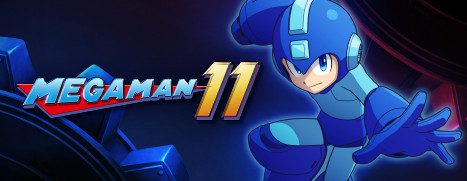
Mega Man 11 / ロックマン11 運命の歯車!! is Now Available on Steam!
Mega Man is back! The newest entry in this iconic series blends classic, challenging 2D platforming action with a fresh new visual style. The new Double Gear system boosts Mega Man’s speed and power for a new twist to the satisfying gameplay the series is known for. Website: LINK
Website: LINK
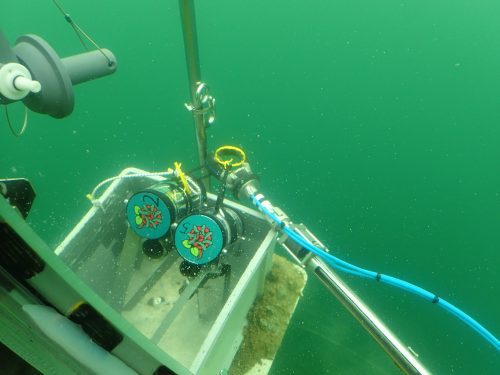
This article from The MagPi issue 74 highlights the use of the Raspberry Pi Zero to build a marine camera for coral exploration. Get your copy of The MagPi in stores now, or download it as a free PDF here.

The crew took 20 000 photos in total during the cruise.
Ecologists in Germany are deploying camera-equipped Pi Zero Ws off the coast of Norway to discover more about coral activity. Dr Autun Purser works in the Deep Sea Ecology and Technology group of the Alfred Wegener Institute. The group has a keen interest in cold-water corals, which are found in most European seas.
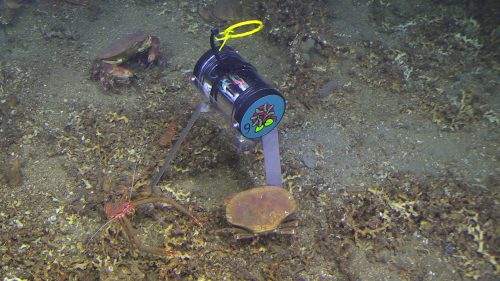
Besides coral, they identified dozens of crabs.
“In the last three decades, we’ve started to understand these can form reefs whenever conditions are suitable for growth,” explains Autun. “During our cruise in the Skagerrak, we intended to map corals and see when, and under what conditions, they did most feeding.”
Their aim was to continue the development of “cheap camera systems which can be used for a range of applications in the deep sea, down to depths of at least 6000 metres. We investigated the use of Pi Zero W computers and [Raspberry Pi Camera Modules] to record video snippets of both the seafloor and any scientific devices that we place underwater, and we found the small size of the computers to be of great benefit to us.”
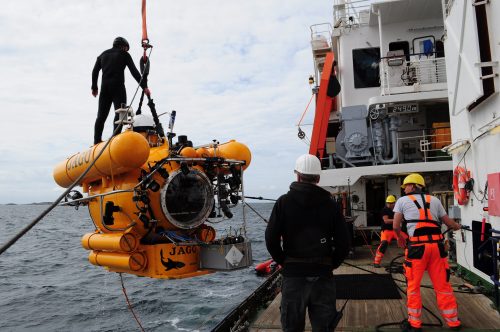
The PiCam Marines are sent underwater in the deployment basket of a submarine. The captain, crew, and scientists aboard RV Poseidon cruise POS526 were also essential for the initial deployments.
The Pi Zero Ws and cameras are placed in strong, waterproof pressure containers, and powered by Li-ion batteries that can withstand the cold deep ocean conditions. “The WiFi connectivity allowed us to set up a router on deck to both initiate our cameras and, on retrieval from the sea-floor, download our collected images without having to reopen the pressure housings,” reveals Autun.
He and two colleagues programmed the camera system using Python 3 to turn on an LED light and take a maximum resolution image, at set times. It has proven “capable of imaging individual corals from 2 m distance, allowing us to tell if the tentacles were actively extended or not.”
Website: LINK

Today’s Deal: Save 50% on DRAGON BALL FighterZ!*
Look for the deals each day on the front page of Steam. Or follow us on twitter or Facebook for instant notifications wherever you are!
*Offer ends Wednesday at 10AM Pacific Time Website: LINK
Website: LINK
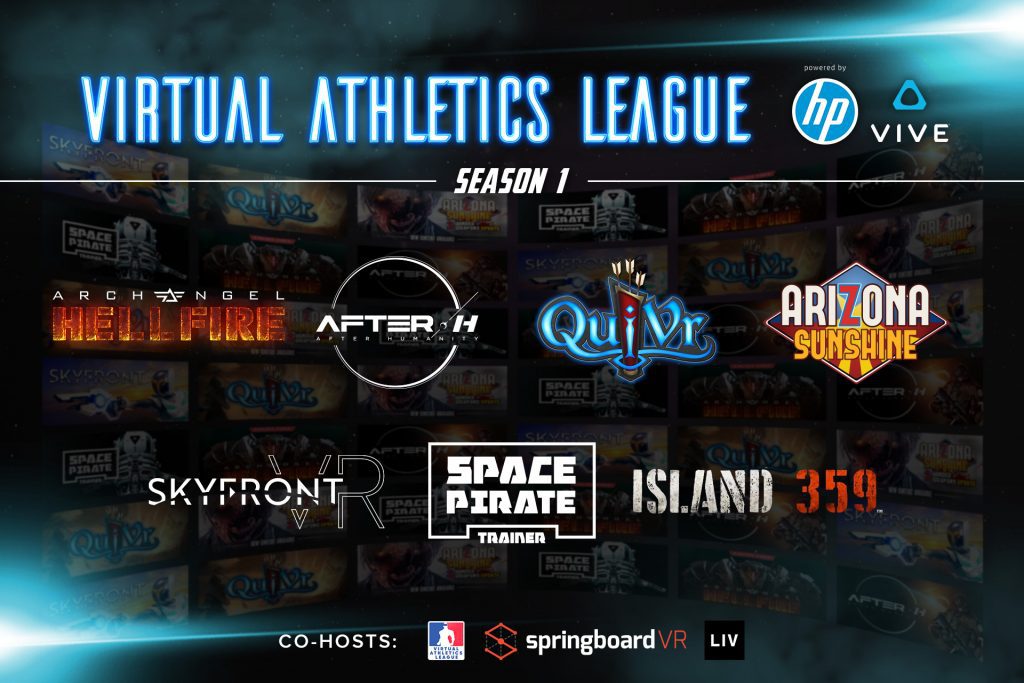
This is a guest blog written by Ryan Burningham of Virtual Athletics League and Virtualities
In a significant step for VR esports, a new global arcade league is forming. Co-hosted by Virtual Athletics League (VAL), arcade management platform SpingboardVR and mixed reality streaming software LIV, the pilot season is getting a major boost from corporate sponsors HP, Inc and HTC esports. This effort is also a collaboration with seven prominent VR game development studios. Official competitions will take place around the world in cities with VR arcades through the rest of 2018 and beyond.

VR esports have long been the realm of science fiction, but the reality is that VR esports are happening today and gaining momentum. The introduction of the HTC Vive two years ago and sophisticated controllers represented a tectonic shift – it moved players from behind computer screens, into the center of their living rooms and VR arcades worldwide.
Ideal games for VR esports are easy to learn, but hard to master. Any new player can walk into an arcade worldwide and within minutes shoot drones in Space Pirate Trainer. However, it takes hours and hours of practice to climb global leaderboards. At the elite level players start to perform time bending moves, dodge lasers by sound alone, and land insane combos with dozens of drones shooting from all directions. People who a few short years ago had never heard of VR, are now competing in VR esports on a global scale.
The Virtual Athletics League started two years ago as a concept from Virtualities, a VR arcade in Salt Lake City, Utah. From the beginning, we saw the potential for VR esports to become a new major worldwide movement. We first noticed that VR athletes were a special demographic after looking at return rates following a local VR esports tournament. Normal customer return rates hovered at around 20%. For customers who attended our VR esports tournaments, that rate skyrocketed to over 50%.
From there, we held a few regional cross arcade tournaments, then a national one for Blaster of the Universe alongside 10 arcades. When the Beat Saber Arcade version was released, the Virtual Athletics League was selected as the official arcade tournament organizer. It was originally slated to take place at 50 locations, but for arcades, it was VR esports gold.
The competition took place at a record-breaking 168 locations globally, with several thousand players and hundreds of video-recorded high score submissions. With Beat Saber, players really put the “Athletics” in Virtual Athletics League, with some player’s heart rates topping out at nearly 180 BPM. This physicality drives the same type of grit and competitivity that are seen in both traditional sports and esports.
Over the course of the tournament, thousands of participants dedicated hours toward achieving the global high score. Our co-host SpringboardVR reported that the number of minutes played in arcades for Beat Saber doubled that weekend over the previous weekend. Our tournament winner took dedication to the next level. They drove many hours, slept in their car, and dominated the competition the next day, taking 1st place out of thousands of participants.
The announcement of the league represents a new chapter in international VR esports. For the first official title of the season, a global Space Pirate Trainer tournament is slated to take place September 27th-30th. Following that, global tournaments will be held with double horror combo Arizona Sunshine and Island 359 for Halloween, then QuiVR in November as an archery multiplayer event. The league is also placing a high priority on arcade vs. arcade gameplay, with a core group of elite VR arcades participating in more team-based titles that are VR esports ready. These official launch titles include the giant mech multiplayer shooter Archangel: Hellfire, a jet-propelled shooter Skyfront, and a tactical sci-fi shooter After-H. More titles will be added later.
[youtube https://www.youtube.com/watch?v=xfa9Jqm34b0]
Arcade vs. arcade gameplay is on the cutting edge of esports. For a long time, traditional sports have benefited from fans loyalty to geography. For us in Salt Lake, we love watching the University of Utah, and their new varsity esports team. While the global arcade tournaments are open to all VR arcades, we are also building a more exclusive core league.The concept behind the core league is that eventually, city-based play will take place on the same scale as professional sports franchises around the world. Our hope is for each arcade to eventually have things like jerseys, dedicated teams, professional casters and a Twitch fanbase. With the sponsorship from HP, inc., HTC Esports and new developer tools like LIV, competitors and spectators alike can compete and engage with esports on a whole new level.
VR esports is no longer science fiction – it’s happening now and the team at Virtual Athletics League is thrilled to be along for the ride. Learn more about VAL and VR arcade esports: www.valvr.com
Website: LINK
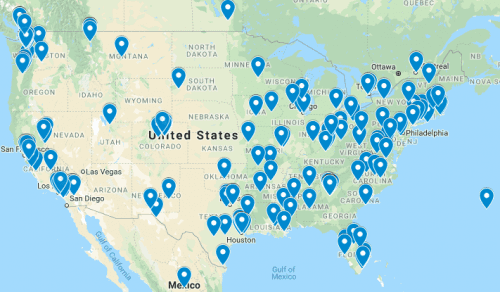
Hooray! We’re celebrating our third season leading educator training in North America. That’s 20 Picademy workshops in 11 cities with 791 happy teachers graduating as Raspberry Pi Certified Educators. This summer was particularly rich with successes, challenges, and lessons learned — let’s take a closer look:
Andrew Collins on Twitter
That’s a wrap on #Picademy North America 2018! We welcomed over 300 educators in Denver, Jersey City, Atlanta and Seattle to the @Raspberry_Pi community. Congrats and go forth on your digital making journey! 😀🙌 https://t.co/aMyHr2KkuL
Picademy is a free, two-day training program that helps educators jump start their digital making journey. On day one, educators explore digital making with the Raspberry Pi computer: blinking LEDs, taking pictures, making motors spin, sensing their environment, and composing music. On day two, they take what they’ve learned from these experiences and collaborate with a team to design and build their own real world project.
Picademy at Liberty Science Center (June 18, 2018 – June 22, 2018)
A total of 80 educators from all over the globe visited Liberty Science Center the week of June 18 – 22 to learn coding and technology skills as part of the Raspberry Pi Foundation’s Picademy program. The week of learning culminated in a programming design challenge where the participants created projects using their new skills via the Raspberry Pi computer.
We received over 1400 applications for this year’s program, a 40% increase from last year. This enormous interest came from educators in North America and across the globe; we received applications from 49 different U.S. States and 20 countries. And it’s not just classroom teachers either. More than half of our applicants worked outside of a traditional classroom environment, as librarians, after-school providers, teacher trainers, museum educators, and technology coordinators. Out of this pool, we accepted 313 educators to our Picademy 2018 workshops in Denver, Jersey City, Atlanta, and Seattle.

We want to make sure that the work we do is having the impact we we intend, so we ask educators who come to Picademy about their skills, experience, and confidence before they participate in the program and afterwards. Before Picademy, only 13% said they felt confident using using a Raspberry Pi computer. After attending, this number rose significantly, with 78% now confident using Raspberry Pi. This increase in confidence matched their sense of professional growth: the majority of educators said that learning new content and gaining new skills were the most memorable parts of their Picademy experience.
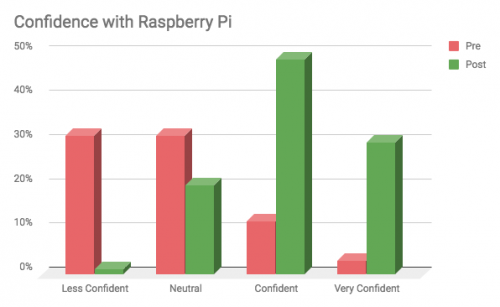
We also had 100% of attendees indicate that they would recommend Picademy to a colleague, and 70% report that they are very likely to share their learnings with fellow educators. This means an even greater number of educators, those who work alongside Raspberry Pi Certified Educators, will hopefully be impacted by Picademy workshop offerings.
“Picademy was such an engaging and hands-on experience. Every workshop and project was practical, tangible and most importantly, fun” — Amanda Valledor, Boston, MA
What do educators go on to accomplish after Picademy? We’re actively gathering this data as we follow up with our certified educators, but based on feedback surveys we know that 58% of this season’s attendees are interested in starting a Code Club or CoderDojo in their community. We also saw that over 70% of educators are interested in leading a Raspberry Pi event or training; this could mean a Raspberry Jam, an educator workshop, or a Raspberry Pi-themed summer camp. Our team will continue to support each and every Raspberry Pi Certified Educator as they continue on their digital making journey.
Carrie Northcott on Twitter
Thank you @Raspberry_Pi for allowing each of us to come and get “debugged”, rewrite our “code”, and “program” our future moves as educators! #picademy #raspberrypi #picademyseattle #edtech @iluvteaching72 @MrsNatto https://t.co/37jMYDZThF
Special thanks to Dana and everyone else who helped to lead an awesome Picademy program this season. If you’d like to take a deeper dive, feel free to explore all of our data and findings in the Picademy North America 2018 Report.
Website: LINK
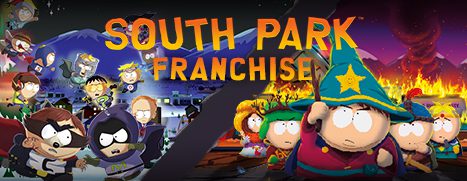
Save up to 75% on South Park Franchise as part of this week’s Weekend Deal*!
*Offer ends Monday at 10AM Pacific Time Website: LINK
Website: LINK

Today’s Deal: Save 50% on Sword Art Online: Fatal Bullet!*
Look for the deals each day on the front page of Steam. Or follow us on twitter or Facebook for instant notifications wherever you are!
*Offer ends Saturday at 10AM Pacific Time Website: LINK
Website: LINK

In celebration of the upcoming Total War: Three Kingdoms , save 10% to 90% off on the rest of the Total War Historic Titles as part of this week’s Weekend Deal*!
*Offer ends Monday at 10AM Pacific Time


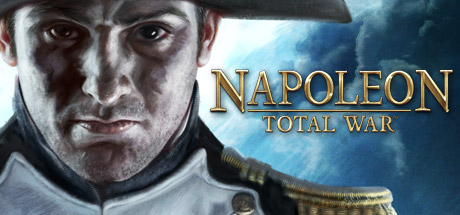





 Website: LINK
Website: LINK